How to reach here:
By Air: Bhopal Airport, also known as Raja Bhoj Airport, is 15 km away from the heart of the city. It is well connected to Mumbai, Indore, Gwalior and Delhi.
Best time to visit: October to March.
Languages spoken: Hindi.
Must eat: Biryani, Quorma & Sheermaal , Meetha Zarda.
Famous Restaurants: Cafe Chokolade, Winds N Waves, Manohar, Shan-e-Bhopal, Pind Baluchi.
Places you must visit:
Jama Masjid is a small, yet beautiful mosque that was built by Qudisiya Begum in 1837. The most distinguished feature of this well-preserved monument is the two massive minarets that are clearly visible to naked eyes even from a considerable distance. Reflecting the dexterity of Islamic artisans, interiors of this mosque are remarkable.Inside the mosque are three bulbous cupolas, accompanied with a series of alabaster-white columned arches and a marble internal sanctum. Jama Masjid had undergone an extensive renovation after 1947, when a small pond was added to it.
Lower Lake, situated a midst majestic hills and the massive Upper Lake, is a beautiful remnant of the great Mughal Empire. Hemmed by the Kamala garden, this lake has been greatly affected by human settlements from all sides. Often known as the Chota Talaab, this Lower Lake is separated from the Upper Lake by an over-bridge.The MP Tourism Boat Club provides exciting trips by sail, paddle boats and motor boats over the Lower Lake for adventure lovers. Lower Lake, along with the Upper Lake, has given a famous sobriquet to Bhopal, the ‘City of Lakes’.
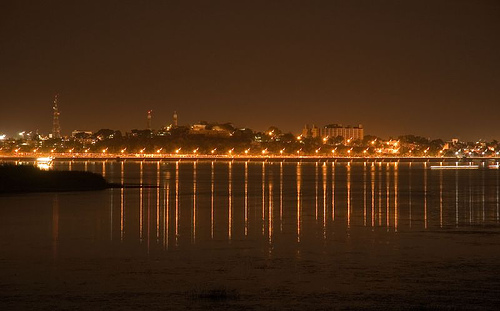

Upper Lake, created by Raja Bhoj in the 11th century, is arguably the oldest man-made lake in India. Locally known as ‘Bada Talaab’, this lake is said to have cured the skin disease of the king. A massive earthen dam constructed across the Kolans River, the Upper Lake serves as the major source of potable water for the residents of Bhopal.Unlike Lower Lake that is surrounded by human settlements, this lake has urban catchment in the east and rural in the west. Encompassing a catchment area of 36.1 sq. km, this lake is the hub of water activities in Bhopal, such as sailing, paddle boating and motor boat riding. Beauty of this lake is enhanced by the Kamla Park in the vicinity.

Sair Sapata is a tourism and entertainment complex situated on the banks of the Upper Lake in Bhopal. Developed by the Madhya Pradesh State Tourism Development Corporation, it is spread over an area of 24.56 acres, and was inaugurated on September 29, 2011. Aimed at promoting tourism, the complex has attractions like musical fountain, two acres of children’s play area, toy train and a suspension bridge, among other things.There is also a suspension bridge which connects Prempura and Sewania. This bridge is built along the lines of the Lachman Jhula in Haridwar. It is the main attraction of Sair Sapata and is 183.20 m long and 3.6 m wide. The bridge is built of RCC deck slabs and is believed to be the first pedestrian bridge in India to be built this way. Boat rides can be taken in the lake, in small pedal boats.

Sanchi is a small town on the outskirts of Bhopal, situated around 48 km from the capital city. The town comes under the district of Vidisha. Sanchi is the living example of visions and beliefs of Emperor Ashoka. It is scattered with numerous Buddhist structures like pillars and stupas.Emperor Ashoka came here and married the daughter of a local merchant. Sanchi thus became his center and he carried out the construction of many buildings. The Ashoka Pillar and the Great Sanchi stupa are the most exquisite works of that time. The Stupas were the earliest forms of Buddhist architecture that were the inspiration for many other buildings.Along with the historical buildings, don't forget to visit the archaeological museum. It showcases the renowned image of four lions that once sat atop the Ashoka Pillar.




Bhimbetka Caves are magnificent caves which are situated just 46 km from Bhopal; they are surrounded by the northern limits of Vindhya mountain Range. As the legend goes, these hills got their name after Bhima, one of the five Pandava brothers. The name 'Bhim-bet-ka' means 'where Bhim sat down'. There are more than 600 caves that have the collection of oldest prehistoric paintings in India. These caves were found by Dr. V.S Wakankar, the famous Indian archaeologists in the year 1958. It took around 16 years to excavate the entire area covered by these caves. Although there are more than 600 caves, only 12 are open for tourists at the moment, but they show you the best paintings that are there in all other caves. And out of the 24 world heritage sites that have been recognized by UNESCO in India, Bhimbetka caves are the oldest one.There are many interesting facts about these caves. These caves had been used as a shelter by people from the earliest of periods. Thus, you will find paintings of all periods starting from Paleolithic era to medieval era. The paintings turn out to be a mirror showing evolution of humanity through time. The style of the paintings of separate periods is so different that you can easily differentiate between them. The paintings of Paleolithic age are huge linear figures of animals like tigers, bears and rhinoceroses. As the time passed, the paintings became smaller, shapely and more precise. The paintings now depicted the daily chores of people like hunting and dancing. Slowly the artistry from raw art turned into religious images showing the change in the mindset. The oldest painting here is said to be around 12,000 years old, whereas the most recent is around 1000 years old. The colors used by the cave dwellers, were prepared by combining manganese, hematite, soft red stone and wooden coal. The paintings over the years have stayed unharmed by nature due to the reaction between the chemicals present in rocks and the color. Even animal fat and plant leaves were used in the mixture.



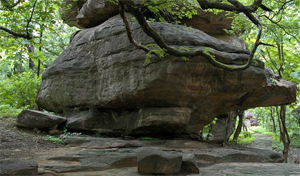
.JPG)
Bharat Bhawan is a multi-arts complex of unparalleled excellence, which was inaugurated on 13th February 1982 by the then Prime Minister of India, Mrs. Indira Gandhi. It was established and financed by the Government of Madhya Pradesh, and is run by an autonomous trust. Designed by architect Charles Correa, this building houses a museum, an art gallery, a workshop and more. Set up to create an interactive proximity among verbal, visual and performing arts, Bharat Bhawan is a thriving centre for contemporary arts. The main entrance of this building is marked by a series of terraced gardens that can be seen cascading down to the Upper Lake. Different units of Bharat Bhawan include Roopankar (museum of fine arts), Rangmandal (a repertory), Antrang (an indoor theatre) and Bahirang (an outdoor theatre). Vagarth (a centre of Indian poetry), Anhad (a library of classical and folk music) and an art gallery are among other major establishments within the complex. There is also an Ashram which serves as the residence for guest artists.



Indira Gandhi Rashtriya Manav Sangrahalaya, or the National Museum of Mankind is spread across a sprawling area of 200 acres. The only tribal habitat in the world, this museum exhibits contemporary tribal cultures and actual-size dwellings of typical tribal villages of Indian states. Situated in a prehistoric site, this one of its kind museum displays a vivid collection of pre-historic painted rock shelters that are replicas of tribal life.The exhibitions at this museum broadly divided into three categories namely open-air exhibitions, indoor galleries and periodical or temporary exhibitions. The open-air exhibitions are open to public and display Coastal Village, Desert Village, Himalayan Village, Mythological Trail and Traditional Technology Park. However, the most striking part of this exhibition is the Tribal Habitat comprising life-size dwellings built by tribes.There are two indoor galleries, namely Veethi-Sankul and Bhopal Gallery that cover an area of around 1200 sq. m. The main building encompasses exhibition halls, a reference library, indoor and outdoor auditoriums and other miscellaneous facilities in approximately 16 levels. Covered with Dholpur sandstone cladding from all sides, this building features Kota stone flooring.
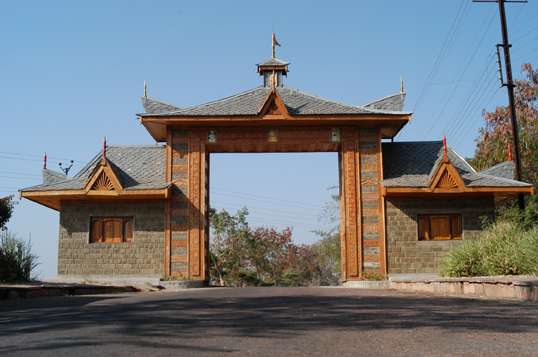


Gohar Mahal, situated on the banks of the Upper Lake, is one of the beautiful palaces in Bhopal. An architectural marvel, this palace was built by the first woman ruler of Bhopal, Gohar Begum in 1820. Designing of this palace depicts a perfect blend of Hindu and Mughal architecture styles. As the palace has not been maintained properly, it is undergoing a path of renovation. This will help the palace restore its original grandeur.
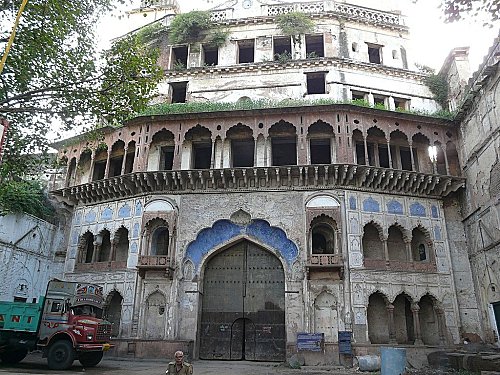


Shaukat Mahal, situated at the Chowk area in the city, is one of the architectural wonders posing an odd mix of Indo-Islamic and European styles of architecture. It is believed that this palace was designed by a profligate Frenchman and is thus very different from the rest of the Islamic architecture in the locality. The Gothic and post-Renaissance styles have been combined in such a manner that this palace turns out to an architectural beauty.Made of beautiful white alabaster, Shaukat Mahal features a series of complicated triangular-shaped arches on the ceiling. The exterior walls of this palace are adorned with delicate floral patterns for an eco-friendly appearance. Shaukat Mahal once served as the palace of the Nawab of Bhopal. Adjoining the palace is a brick-red building of Sadar Manzil that once served as the hall of public audience and is surrounded by beautiful gardens.

Sadar Manzil served as the royal courtroom of the Nawabs ruling over the Bhopal state. Entrance of this former hall of public audience is marked with a massive wooden door, which leads into a smaller main gate. The first floor of the main gate has a huge terrace balcony, while the second floor features four domes, one in each corner. The ground and first floors are lined with a series of rooms; however, the second floor has only a high rise room with a terrace that was used for night watching.The main gate opens into a large courtyard, centre of which is marked with a beautiful fountain. Overlooking the garden is a large podium, which once used to be the seat of the ruler. Windows have been built on each side of the stage for the royal women to watch the court proceedings. The rectangular building that houses the stage has a central open space with rooms on sides. From the stage twirls a staircase that leads to the rooms on the first floor. This depicts that the first floor was accessible only to the royal family.
Today, this brick-red edifice serves as the headquarters of Municipal Corporation of Bhopal; wherein elected representatives take important decision regarding development of the city. Once a seat of men with swords, this cantonment surrounded by precincts is now occupied by men and women with ideas. Located near Gohar Mahal, the Sadar Manzil lures plenty of tourists for its exceptional architecture and artistic beauty.

Van Vihar National Park is an oasis of greenery spread across an area of 445 hectares. More of a zoo, this site houses a variety of animals that are orphaned, brought from other parts of the state or exchanges from other zoos. A natural habitat housing both herbivores and carnivores, Van Vihar was declared a national park in 1983. However, it has been developed and managed as a modern zoological park.One of its kind, this national park allows herbivores to roam freely while the carnivores are kept inside enclosed areas bounded by trenches and walls in order to prevent poaching. Captives at this national park like tiger, panther, lion and more are fed on mutton. Free ranging animals like chital, sambar, black buck and blue bull feed on the grass and other plant species growing in Van Vihar.Besides herbivores and captives, the national park is also home to animals belonging to endangered species. The wilderness of the park also makes an ideal place for avian fauna, which comprises over 200 species of birds migrating to the park during the winter season. This national park is also the abode of variety of butterflies and insects. Van Vihar National Park is maintained and administered by Forest Department of Madhya Pradesh.
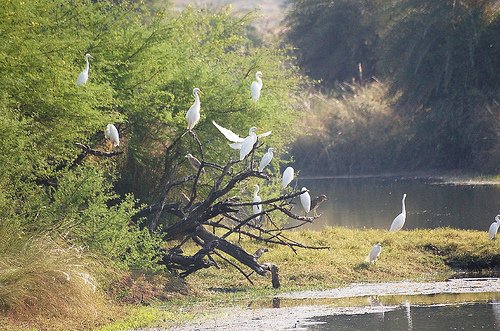

Archaeological Museum, formerly known as the Bhopal Museum, was inaugurated in November 2005. Housed in a majestic building, this museum houses a splendid collection of sculptures brought from various parts of the state. Displays at this museum are coins, excavated artefacts, paintings, tribal handicrafts, musical instruments, figurines and sculptures which provide an insight about the rich cultural heritage of Madhya Pradesh.Main exhibits at this museum are precious artefacts including statues of Lakshmi and Buddha and images of Brahma, Vishnu, Shiva and Parvathi. Paintings of different schools and copies of paintings from the Bagh caves are other important displays at the museum. The museum also harbours a fine carving of two couples from Khajuraho and 87 Jain bronzes that were retrieved from Dhar during the Paramara Dynasty (12th century).
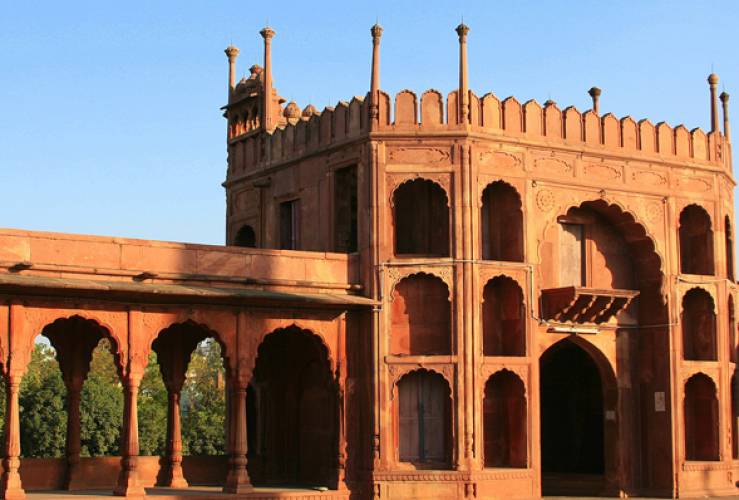
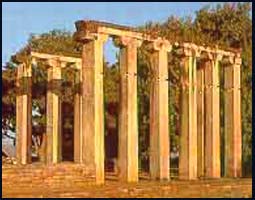
Birla Museum is an archaeological museum established in 1971. The Birla Museum of Bhopal preserves the evidences and artifacts right from the prehistorically period. The Birla Museum of Bhopal exhibits the wide variety of aspects that highlights the rich cultural and historical heritage of the state of Madhya Pradesh. Birla Museum is a genuine endeavor to put on display the rich and varied culture of Madhya Pradesh. Other exhibits at the museum include tools and equipment that were used by primitive men during the Paleolithic and Neolithic ages It is certain that the stunning scale model of Bhimbetka rock shelter with its ancient murals will make the viewer dumbfound. Tourists who are interested in archaeology will be greatly benefited by the display of stone sculptures from the 7th to 13th century and coins, manuscripts and Terracotta belonging to 2nd century BC to the 6th century AD.

A beautiful Lakshmi Narayan Temple (Birla Mandir), located atop the Arera Hills, is dedicated to the Hindu Goddess of Wealth, Lakshmi. The temple houses beautiful idols of Lakshmi and her husband Vishnu, along with a shrine of Lord Shiva and his wife Parvathi. Surrounded by greenery and marked with an ancient charm, this temple provides a feeling of solace to the devotees. Built by the industrial family of Birlas, the temple is also known as Birla Mandir. The building of the temple is sandy-yellowish in color and has an old-worldly charm of itself. On one side of the building is a huge turret, while sprawling lawns surround the complex from other sides. Entrance of this temple is marked by a magnificent archway.
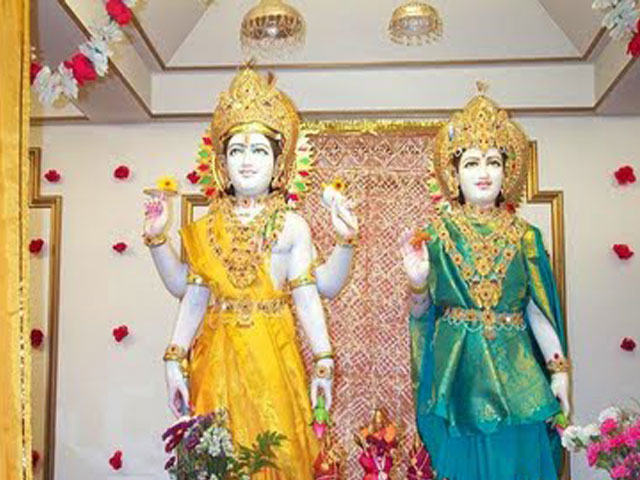

The Taj-ul-Masjid is one of the largest mosques of Asia. The beautiful mosque was built by Nawab Shahjehan Begum of Bhopal.The mosque also has spacious courtyard with a large tank in the centre and with an imposing double storeyed gate-way with 4 recessed archways and 9 imposing cusped multifold openings in the main prayer hall. Quibla wall inside the prayer hall is adorned with eleven recessed arch carvings and fine screens of trellis work. The structure is enlivened by the limpid expanse of water in the tank outside the northern wall. The literal meaning of the term Taj-ul-Masjid is ‘The Crown of Mosques’, and the building really presents a magnificent spectacle and is worthy for a watch. It’s pink facade and the huge white-domed minarets provide it a miraculous charm.The mosque also has so many other spectacular features, which adds its natural charm. Among them the three huge bulbous domes, an impressive main hallway with attractive pillars, marble flooring and a spacious courtyard are very conspicuous.


Moti Masjid, a lovely shrine in Bhopal is a significant landmark in the history of muslim women in India. Commonly known as the Pearl Mosque because of this sparkling white fascia, this marvelous shrine was constructed in 1860 by Sikander Jehan Begum of Bhopal. The architectural design of the Moti Masjid has a close similitude to the famous Jama Masjid in Delhi. Its dark red towers and golden spikes are really fantastic. The façade of the mosque is of glittering white marble, which provides an ethereal look. Standing majestically in brick red color, this mosque features a white marble façade with two small cupolas on the top. On either side of the main building is a dark red tower adorned with bright golden spikes. Considered to be the gate to heaven on earth, these beautiful minarets are used for the call to prayer for the faithful followers of Islam.



Regional Science Center was opened in Bhopal on 12th January 1995 by the then president of India Late Shankar Dayal Sharma. One of the 27 constituent units of National Council of Science Museums (NCSM), this center is a fun science gallery. Facilities at this science center include an auditorium with 200 seating capacity and a conference hall with 25 seating capacity. At this center visitors can witness pendulums creating chaos, rings defying gravity and colored liquids making impossible mixture changing spectacles. Other displays at this center include carom boards shaped in the form of an ellipse, magnets with (in)visible lines of forces and other enjoyable contraptions. The center is home to a unique science park occupying 3 acres of land, which contains over 60 interactive fun-filled working exhibits.The Hall of Energy housed within the center allows the visitors to learn about different forms of energy, their production, practical applications and environmental issues associated. Exhibits at this hall highlight the importance of renewable sources of energy such as fuel cells, OTEC, bio fuels, coal bed methane, gas hydrates and fusion energy. Another gallery at this center, known as Umbrella is under major renovation nowadays.The center also houses a mini portable planetarium with an inflatable dome that has a seating capacity of 25 people. The 30-minute show at this planetarium allows visitors to get acquainted with different stars, constellations and zodiacs of the night sky. To study the movement of planets and moons, a separate facility has been equipped with telescopes. Another 50-seater facility showcasing 3D science shows has also been installed here.
Fish Aquarium, situated near Raj Bhavan and the old assembly hall, was established on 31st May 1977. Spread across an area of one hectare, this aquarium is a double-storey fish house built in a fish-like structure. The upper portion of the aquarium features 40 glass aquariums housing various species of living and colourful fishes. Lower section on the other hand, has 26 big aquariums housing different fishes from lakes, rivers and ponds. On the whole, the Fish Aquarium is home to 66 varieties of fishes including ornamental and fresh water types Common fishes that can be seen in the upper fish house include golden shark, paradise blue and many more. Other fishes like Rohu, Katla, Mirgal and many others can be seen in the big aquariums on the lower floor.


Gufa Mandir is located near Lalghati. It is said that Late Baba Narayandas founded it in the year 1949. In the large campus of mandir, beautiful idols of Lord Shiva ,Rama, Laxman, Sitaji,Goddes Durga and Hanuman are built. People and devotees from different places come for darshan everyday. A sanskrit college is also located in the campus.

Khatlapura Mandir, situated near the Lower Lake, is an ancient temple that was built 150 years ago. Though the temple is dedicated to Lord Ram. The temple enshrines beautiful idols of Lord Shiva sitting on Nandi, Lord Ganesh, Goddess Durga, Laxman, Sitaji and many other Gods and Goddesses. . Thousands of devotees visit the temple every year. A fair is celebrated here every year on Dol-Gyaras.

Lovely places its really looking attractive nice place to visit.
ReplyDelete